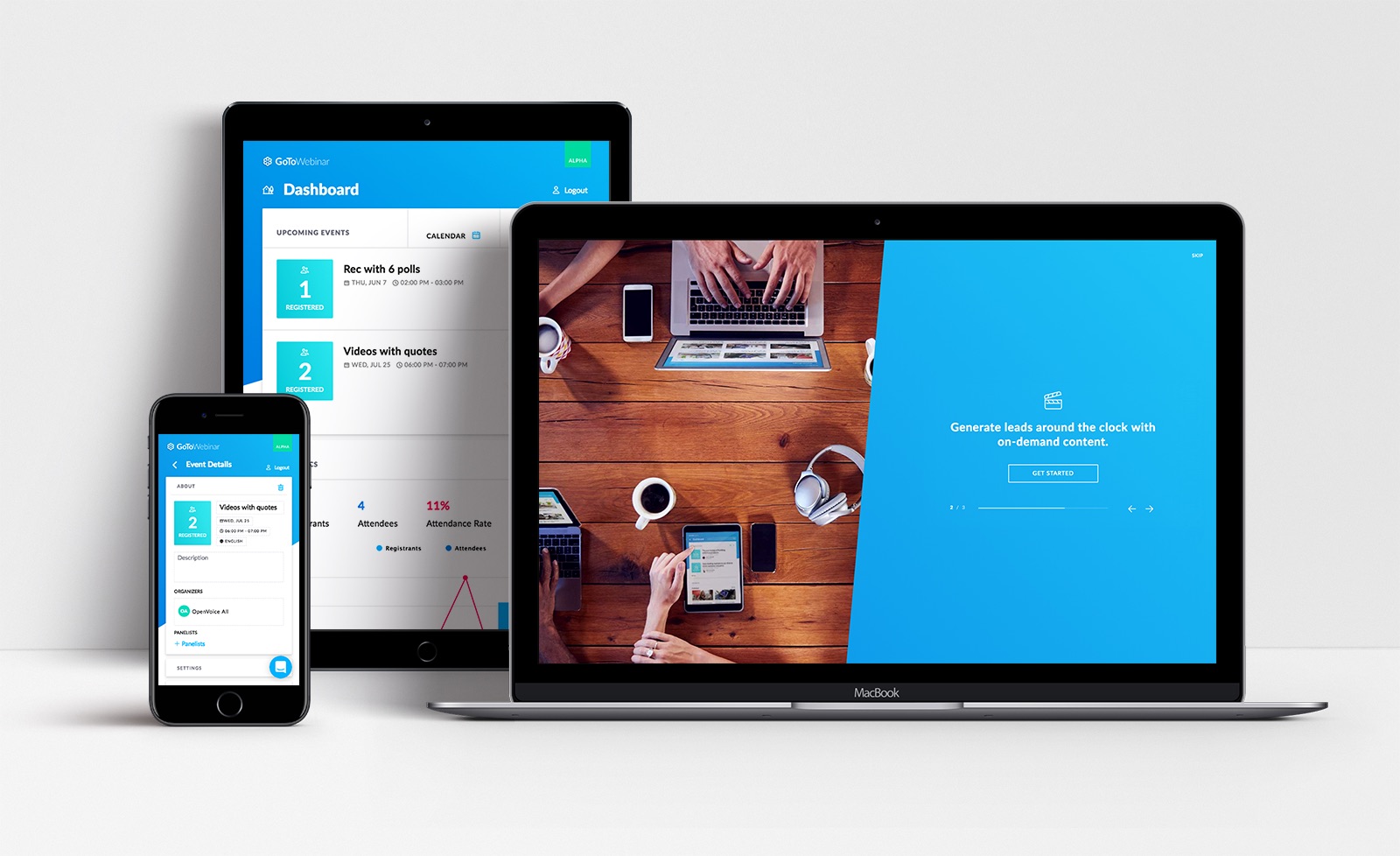“How can I replicate the classroom experience in a webinar?”
That’s probably the number one question I get asked by instructors, teachers and trainers.
The answer is simple, and supremely unsatisfying. You can’t. And you shouldn’t try.
The physical group dynamic affects the experience in an in-person classroom experience – for both the leader and the students. There is something magical about the way that humans respond in physically grouped environments. It’s one of the reasons that stage plays and musicals have such a hard time making successful transitions to the screen. It’s the reason crowds get more “riled up” at physical political rallies than by watching broadcast speeches.
Even in a strict lecture format, there is a constant stream of two-way collaboration going back and forth, often below the level of active consciousness. Presenters pick up myriad subtle, unspoken cues from their audiences. Expressions, body language, intensity of attention, note-taking behaviors… all come flooding back to the lecturer, allowing quick shifts in style or changes in level of detail, which then create new audience reactions.
Some of this dynamic is possible in a small group video meeting, such as you might hold in GoToMeeting (particularly given the new video-centric format introduced in the latest release). But even with all participants on camera and sharing a group chat panel, there is a still a “once-removed” artificiality from looking at video images that is different from a physical meeting space.
You aren’t going to reproduce that specific physical dynamic in an instructional web seminar. Attempts to do so result in frustration for the instructor and the class.
But don’t lose hope! Despite my gloomy introduction, you can still have rewarding and effective instructional sessions online. Web collaboration can be a remarkable tool for training. You just need to concentrate on taking advantage of the strengths of the technology rather than trying to force it to accommodate the same stylistic approaches you might use for a physical classroom.
Let’s take a look at common pitfalls that often trip up experienced instructors when they move online. For each, I will offer an alternative way to think about accomplishing the goal online.
Dispensing Facts
I see far too many instructional webinars that turn out to be 40-50 minutes of a lecturer acting as a “fact faucet.” You start them up and out flows an unbroken stream of factual information. This is particularly prevalent in continuing education for professionals such as lawyers, accountants, and other fields that require frequent updates on new regulations or standards.
 A webinar is a poor substitute for a written document summarizing new facts that professionals are expected to know. People will not remember all the information you throw at them in a 60- or 90-minute session, and they will just end up needing to go back to a written reference source later anyway. So why put them through the monotony of listening to you pretend you are a “books on tape” narrator?
A webinar is a poor substitute for a written document summarizing new facts that professionals are expected to know. People will not remember all the information you throw at them in a 60- or 90-minute session, and they will just end up needing to go back to a written reference source later anyway. So why put them through the monotony of listening to you pretend you are a “books on tape” narrator?
In a physical classroom setting, this kind of lecture is often accompanied by a written workbook distributed to the attendees. The students follow along with the written source material, listening to the lecturer while reading.
In an online setting, the “accompanying workbook” idea is harder to realize. Many online attendees won’t have printers nearby, so the electronic document you provide needs to be opened in one window while the web conference continues in another window. As more and more people join webinars via mobile devices and laptops, the small screens make it hard to switch back and forth between workbook, webinar visuals, and webinar chat or other panels. It becomes overwhelming and frustrating for the attendees.
With these kinds of topics, why not try the “flipped classroom” approach? This methodology calls for students to read through the basic introduction of the new material ahead of time. You make it clear that this is their responsibility and will be an expected prerequisite to the session. Then, instead of the lecturer setting the pace and introducing each fact one after the other, you invite the students to set the priorities and focus of the discussion. What did they have trouble understanding? Which items need clarification on details? Which ones do they want to challenge?
You open the session with this priority-setting as a group exercise. You might use polls or typed Q&A/Chat panels, or whiteboarding, or even a third-party web application that allows collaborative upvoting and reordering of bullet items. This doesn’t have to be fancy… I have seen quite effective examples where the group leader simply opens a Word document in screen share mode and types the suggested topics into the document as students suggest them.
A well-prepared instructor will have visual materials such as PowerPoint slides prepared and ready to use for each of the facts that were distributed ahead of time, so that the class can focus on any topic of discussion with the accompanying reference information right in front of them.
Timed Activities
Another tried-and-true classroom strategy offers students time to work through a problem or reflect on a scenario or produce a list of responses. The leader stays silent during the exercise, perhaps wandering around the room to check in with individuals or teams as they work on the assignment.
There is nothing preventing you from offering these same kinds of exercises in an online session, but they tend to fall flat. That “psychology of shared physical experience” is missing in a webinar. Students can’t see anybody else working. Even more importantly, nobody can see THEM working, so students lose the sense of peer pressure and responsibility for doing the assignment. Attention drifts and people get distracted by incoming emails and text messages. The leader has a hard time knowing when the class is done and is ready to move on.
It feels like uncomfortable “dead air” and attendees may wonder why they are being asked to spend their valuable time purportedly hearing and learning nothing during those intervals. It’s not fair… the instructional value could be just as great as doing the same exercise in a classroom, but it ends up getting perceived differently.
I recommend altering such activities to avoid offline work during an online session. Instead, encourage group interactions and public brainstorming. Try to keep the conversation flowing, either on microphone or in typed Chat.
Breaking for Questions
There is a fine line between too little and too much interaction in an instructional course. The most common attendee complaint comes from instructors who lecture through the majority of the session and then allow a few minutes at the very end for questions. But I have occasionally seen the bar unbalanced in the other direction… Instructors who interrupt themselves in mid-sentence the moment they notice a question get typed in from an attendee.
Web conferencing has that wonderful strength of allowing questions to come in at any time. You don’t have to stop what you are doing in order for students to get their questions into the queue (something you can only accommodate in a physical setting by calling on them). But that doesn’t mean you have to deal with each comment or question immediately.
I have two pieces of advice for how to be most effective with typed submissions from your students. Firstly, if it is possible and practical, have an assistant monitor and engage with typed entries. The person who is speaking can concentrate on presentation without splitting their attention to deal with the typed conversation stream. This works particularly well if you have co-presenters in a session. They continually trade off roles of speaker and typist. The person who is not actively speaking can find important or relevant questions and comments to introduce to the speaker at a break point.
And break points are the second recommendation. As you prepare your material, build in convenient break points to stop and interact with your students. After each major topic section, allow question time. This sounds easy enough, but it takes some experience and some planning to learn how to budget your time over the course of an entire class. Make sure to create a timeline schedule to keep yourself from spending too much time in any one question break, forcing you to shortchange something else later in your talk.
Emphasize Applicability
I’ll wrap up this lengthy treatise by circling back to something associated with the earlier pitfall I mentioned about dispensing facts. I often see instructors and lecturers get so wrapped up in the instructional points they are making that they forget about making the information relevant for their audience. Some pundits refer to this as spending all your time on the WHAT and omitting the WHY.
Each time you introduce a new piece of information, supplement it with the reason your students should care about it. How does knowing it help them? How can they apply it in their personal or professional lives? How does it relate to the overall reason they signed up for the class?
This process can be interactive as well as declamatory. Why not invite some brainstorming or public comments on how they intend to apply the information? If you look at one of your slides and can’t quickly and easily identify why a listener would care about the information on that slide, you have more work to do.
Astute readers will see that many of these concepts apply to ANY well-constructed, well-delivered presentation. Instructional activities tend to amplify their importance because of the interactive, goal-oriented nature of the task. With a little extra planning and preparation, you can make your next training webinar stand out in your students’ minds.
For more tips, tricks and information from Ken, please visit Webinar Success or The Webinar Blog.
